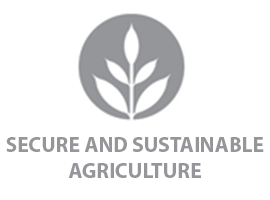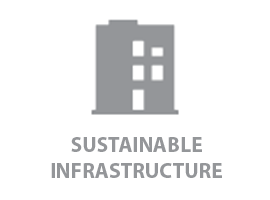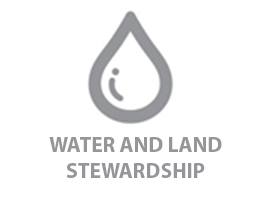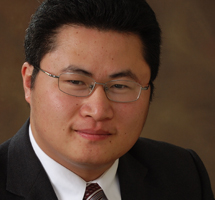Mapping resilient communities project (2015-17)
Research Menu
 Current
Current
Funded
iSEE Work
 Current
Current
Funded
iSEE Work
Current
Funded
iSEE Work
Current
Funded
iSEE Work
Current
Funded
iSEE Work
Project Overview
![]() Running 2015 to 2017, the Mapping Resilient Communities project fit into the Sustainable Infrastructure iSEE research theme.
Running 2015 to 2017, the Mapping Resilient Communities project fit into the Sustainable Infrastructure iSEE research theme.
This project seeks to model the impacts of natural events such as earthquakes, tsunamis, and hurricanes — as well as human actions such as terrorist attacks or interventions — on communities and ecosystems.
Originally funded in 2015 by $220,000 from the U.S. Army Construction Engineering Research Laboratory (CERL), the team brought together by iSEE uses a “capability approach” to explain what residents can do — or be — after such a stressor occurs.
In Lead Investigator Paolo Gardoni’s words: “Evidence from several case studies shows that the socioeconomic status of a community influences how it is impacted. The focus of this project is to predict measures of impact of future events. We will use an extensive database and additional modeling to predict the extent of the impact of such an event — as well as the length of recovery, or resilience of the affected community or ecosystem.”
The team has built sophisticated mathematical models to understand the vulnerability of complex interdependent infrastructure systems — such as water pipelines, roadways, power grids, and communication networks — that are closely attached to communities.
“Particular focus will be on capturing deterministic and random propagation of cascading disruptions — such as water shortage caused by electricity outage and pump failures — and the collective impacts to residents,” Co-Investigator Yanfeng Ouyang said. The research also explored ways to mitigate such vulnerability through more robust pre-disaster design and more effective emergency responses.
Project News
In April, the Mapping Resilient Communities team submitted a manuscript to the journal Computer-Aided Civil and Infrastructure Engineering, with title “Vulnerability of Interdependent Urban Infrastructure Networks: Equilibrium after Failure Propagation and Cascading Impacts.”
In addition, PI Yanfeng Ouyang and his students made a presentation titled “Interdiction And Restoration Of Interdependent Infrastructure Systems in Military Operations” on Nov. 15, 2016, at the Institute for Operations Research and the Management Sciences (INFORMS) Annual Meeting in Nashville, Tenn.
In April 2016, the U.S. Army Construction Engineering Research Laboratory (CERL) awarded PI Yanfeng Ouyang and co-PIs Paolo Gardoni and Colleen Murphy an additional year of funding to continue their research into the resiliency of communities during times of manmade or natural extreme events.
In addition, the team received direct funding for four graduate students to assist in the project.
iSEE, which helped form the team and gain the initial CERL grant, also assisted in applying for this extended federal grant.
The Team
Faculty PIs and co-PIs
- Paolo Gardoni, PI, Professor of Civil and Environmental Engineering (CEE). His faculty page. His Creating a Multi-hazard Approach to Engineering (MAE) Center page.
- Yanfeng Ouyang, Professor of CEE. His faculty page. His research page.
- Colleen Murphy, Professor of Law and of Philosophy. Her Law page. Her Philosophy page.
Students
- Liqun Lu, Ph.D. candidate in CEE. His Ouyang lab page.
- Armin Tabandeh, Ph.D. candidate in CEE.
- Yi (Victor) Wang, Ph.D. candidate in CEE.
- Zhaodong Wang, Ph.D. candidate in CEE. His webpage. His Ouyang lab page.
Former student
- Xin Wang, Ph.D. graduate in CEE. His faculty page at University of Wisconsin-Madison.
Publications & Presentations
(iSEE project members’ names in bold):
- Publication (submitted April 2017): “Vulnerability of Interdependent Urban Infrastructure Networks: Equilibrium after Failure Propagation and Cascading Impacts.” Lu, L., Wang, X., Ouyang, Y., Roningen, J., Myers, N., Calfas, G. Computer-Aided Civil and Infrastructure Engineering.
- Presentation: “Interdiction And Restoration Of Interdependent Infrastructure Systems in Military Operations.” Lu, L, Wang, Z., Ouyang, Y. Institute for Operations Research and the Management Sciences (INFORMS) Annual Meeting, Nov. 15, 2016, Nashville, Tenn.
- Poster Presentation: “Vulnerability of Interdependent Urban Infrastructure Networks: Failure Propagation and Societal Impacts.” Lu, L, Wang, X., Ouyang, Y, Myers, N., Roningen, J., Calfas, G. ransportation Research Board (TRB) Annual Meeting, Jan. 10-14, 2016, Washington, D.C.
- Presentation: “Reliability of Interdependent Urban Infrastructure Network: Failure Propagation and Consequential Social Impact.” Lu, L, Ouyang, Y, Wang, X. Institute for Operations Research and the Management Sciences (INFORMS) Annual Meeting, Nov. 1, 2015, Philadelphia.





